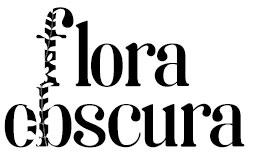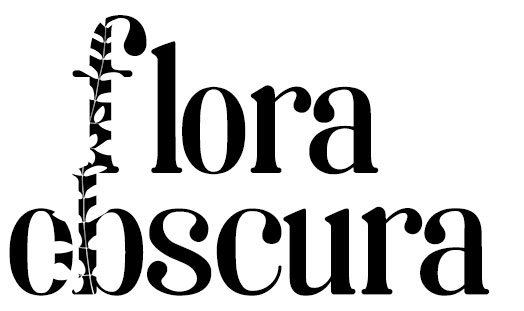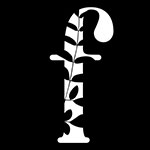Is this really all edible?
Yes, but aution is nevertheless required. Not only because there can be individual allergies and intolerances. In some of the depicted fruits (e.g., Osage orange, bean pods), only the seeds are edible. In the object description it is always indicated which part is edible (“Edible Parts”). Moreover, many of the objects (e.g., garden beans, potatoes)are only edible when processed (cooked, dried, roasted) or after frost. There are also contradictory data on toxicity for a few objects, so that consumption is generally not recommended. In the case of wild fruit, wild vegetables and self-collected mushrooms, the greatest attention is of course required because of the risk of confusion.
Why are there also poisonous objects in the collection?
Much of our food is toxic under certain circumstances. Whether something is toxic or not decide apart from individual disposition the quantity and the processing. So the nutmeg is indeed poisonous, but only in a quantity that would normally never be consumed. Also all beans are poisonous in the raw state, yet they are not to be imagined from the human diet. Other rather unknown poisonous foodstuffs and fungi such as fly agaric and so-called wild sago have been important in the past, which is why they are not to be missed in this collection.
Where do the objects come from?
Most of the objects are from the Palmengarten and the Botanical Garden in Frankfurt am Main, as well as from the collections of the Goethe University: the Riedberg Science Center and the Archeology and Archaeobotany of Africa, which has its own collection of dried objects with a focus on Africa, complemented by parts of the university’s food chemistry collection. Also in the Kleinmarkthalle Frankfurt and in many Asia markets I find fresh objects, but here with partial misleading names. Only a few objects come from local markets abroad. I collected a lot of wild fruits and wild herbs, as well as some mushrooms. Hobby gardeners also donate exciting field and garden crops.
Why Latin names, and what do the abbreviations mean?
In order to be able to communicate in biology about beings, a clear allocation of a name is required. In the everyday language, different species sometimes have the same names, so that it is not immediately clear what the speech is about. A nice (and not very serious) example of this might be the kiwi once as a bird and once as a fruit. In the eighteenth century the rule of the binary nomenclature developed by Linné was agreed, since then a species name always consists of at least two terms: the genus and the species name.
The resulting species name is strictly speaking only complete with the author’s name (the name of the first discriber) and the year of the initial description. For a clear assignment I need this however not here.
In addition, the following abbreviations can be added:
cf. = (lat. confer for “compare”) uncertain determination; When the abbreviation is before the species name, the species is not safe, when it is before the generic name, not even the genre is safe
cv. =”cultivar”, sometimes before the cultivar epithet of crop plants
f. = (Lat. forma for “form”) taxonomic unit below subspecies and variety, e.g. for special colours of a variety
subsp. or ssp. = Subspecies
var. = (Lat. varietas for “variety”) taxonomic unit between subspecies and form
x = between two species names, means that it is a cross between these two
How are the photos created?
These special plant portraits are studio shootings. The individual objects are photographed at the repro stand in front of a black background and with studio lighting, according to a specific method, which is known in focus stacking, especially in macro photography. The closer one approaches the subject with the lens, the smaller is the depth of field. Small objects are then sharp in the front area and become blurred towards the back, so that details disappear. In the case of the focus stacking method, each individual focal plane of an object is photographed at the repro stand, and these are then stacked on top of each other with a specitif program to form a completely sharp image.
Why are you doing this project?
In the beginning, there was the over years persisting amazement about the variety of plant food which I stumbled upon when shopping or traveling. This huge variety of colours, shapes and structures, fragrances and flavours – all this was fascinating me again and again. Soon I wanted to know how the spice star anise looks fresh on the shrub, and somehow I wondered that the cashew seed seemed to grow outside the fruit. The usual trade names often obscure the true identity of a fruit, and I was very interested in seeing through this confusion. I wanted to not only consume but know and understand what I eat. With this project, I also want to show to others the enormous variety which is available for our diet, which is more than just sufficient for a balanced diet, but also a pure delight – even for the eye!
Can I follow Flora obscura in the social media?
Yes, at Instagram
May I paint or draw pictures of Flora obscura?
The painting or copying of my pictures is only allowed for private use. The drawing or the painting may not be traded or exhibited, since it is a copy of my picture, for which you have not acquired any rights of use (I do not grant any rights of use for this). The following picture aspects, which belong to my artistic work, would be copied: Selection of the object, preparation and orientation of the object, the illumination through which the object receives its appeal, looks vivid and structures become visible, and the digital retouching.
Can I use the pictures for free?
No.
Many hours of work go into each picture. Licenses and equipment have to be paid. Please appreciate my work not only by complimenting it, but also by being willing to pay a fair fee if you want to use an image.
You can get prints in my Art Shop. “Exhibitions” outside the art market, i.e. for the decoration of private and business rooms, trade fair stands, etc., are possible for a customary exhibition fee. If you are interested in purchasing rights to use digital images, please send me an e-mail. You can find more information about buying pictures here.
Can I buy fruit or seeds here?
No. Just the pictures of it.


